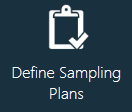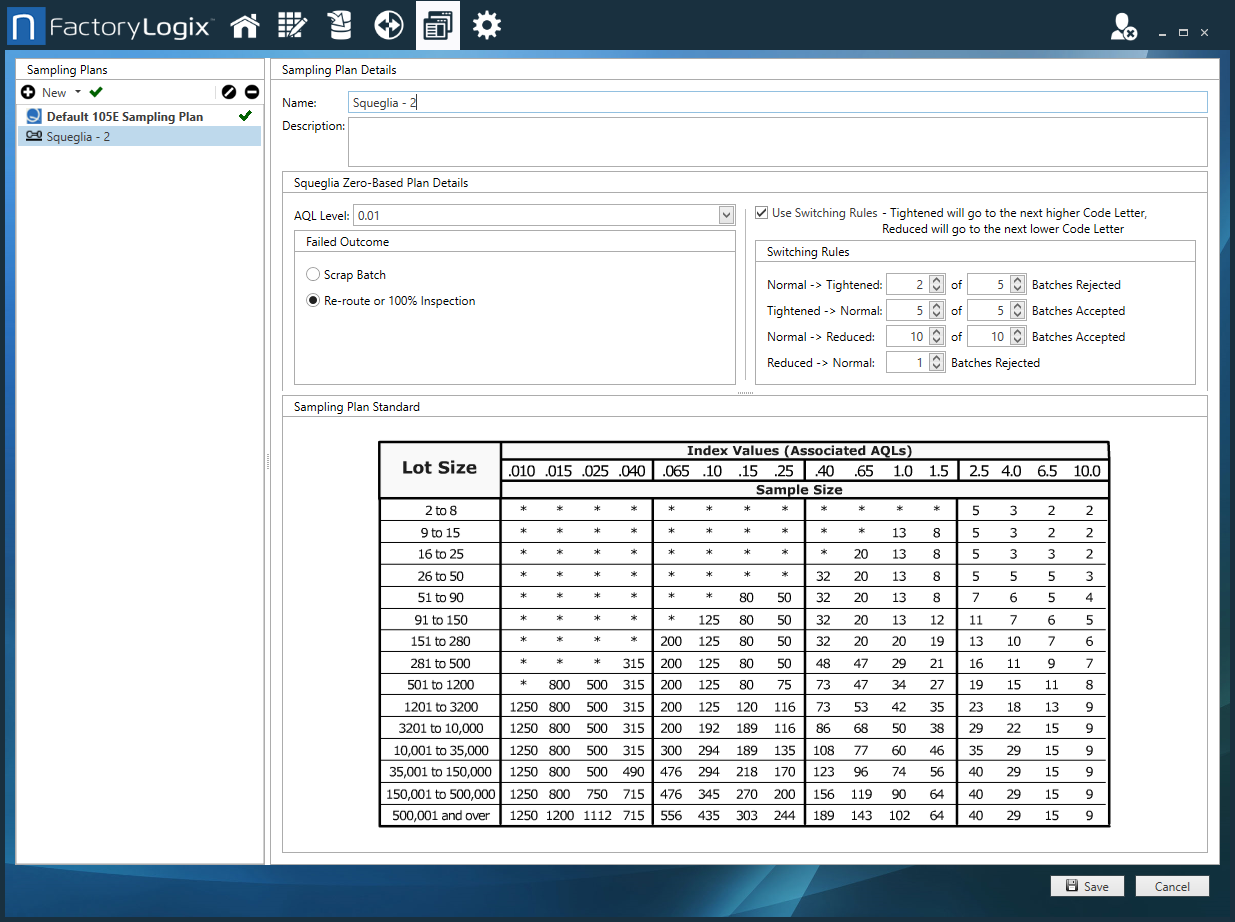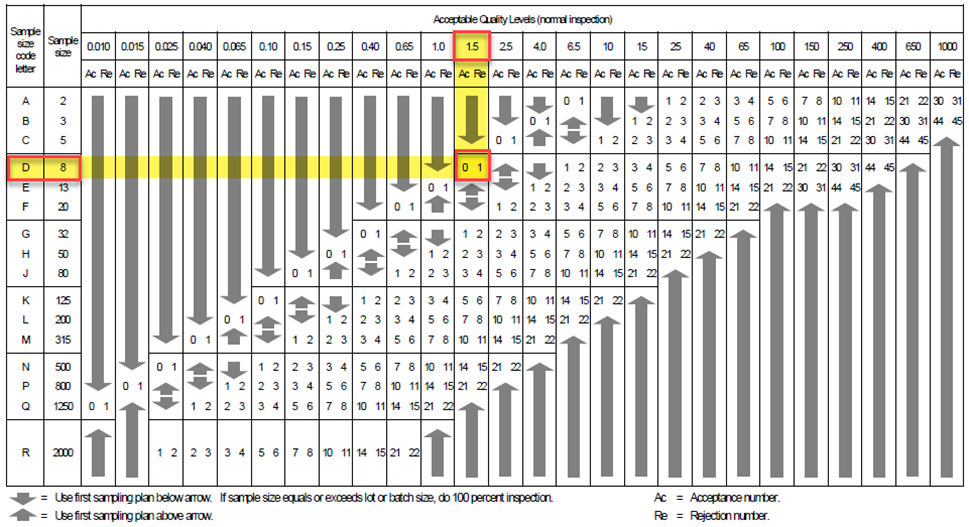Add a new quality sampling plan

Sampled inspection or sampling plan is a process where predefined rules determine a quantity of parts that must be inspected before the parts can be added to stock.
You can create multiple sampling plans for different types of parts in FactoryLogix based on the criticality of quality. For example, parts used to build a child's toy may not need a strict incoming inspection strategy while parts used to build an implantable medical device such as a pacemaker would require very strict inspection processes.
Sampled inspection in FactoryLogix uses three different sampling plan types; each base plan type has configuration options that you can adjust to achieve a particular Acceptable Quality Limit (AQL). In addition, you can utilize switching rules to automatically loosen or tighten quality requirements based on a vendor's prior quality history.
Once defined, you can link sampling plans to specific vendors and/or receiving processes.
Supported sampling plans
FactoryLogix supports the standard sampling plan types described in the following table.
Standard | Description |
|---|---|
MIL-STD-105E (ANSI/ASQ Z1.4) | MIL-STD-105E is a United States defense standard that provided procedures and tables for sampling by attributes based on Walter A. Shewhart, Harry Romig, and Harold Dodge sampling inspection theories and mathematical formulas. Widely adopted outside of military procurement applications. The last revision was MIL-STD-105E. 1 |
MIL-STD-1916 – Accept on Zero (c=0) | MIL-STD-1916 is a United States defense standard that contains Accept On Zero (AOZ) plans for attributes, variables, and continuous sampling. https://variation.com/wp-content/uploads/standards/mil-std-1916.pdf |
Squeglia Zero-Based Plan | The Squeglia Zero-Based sampling plan requires far less inspection than the corresponding ANSI/ASQ Z1.4 (formerly MIL-STD 105) plan and becomes viable when the supplier is extremely confident in its level of quality.1 |
Simple Sample | A Simple Sample plan is a subset of a statistical population in which each member of the subset has an equal probability of being selected. A simple sample is meant to be an unbiased representation of a group. Simple (random) sampling extracts a research/study sample from a larger population. Selecting subjects completely at random from the larger population also yields a sample that is representative of the group being studied. Example: Choose the names of 25 employees out of a hat from a company of 250 employees. In this case, the population is all 250 employees, and the sample is random because each employee has an equal chance of being chosen. |
Add a new sampling plan
Log into the NPI client application.
Select Templates and Standards
 > Define Sampling Plans.
> Define Sampling Plans.Select the New
 button, then select base plan type from the drop-down.
button, then select base plan type from the drop-down.Enter a Name for the new plan.
The top half of the window contains Sampling Plan Details settings; the bottom section contains a chart specific to the plan type and options you selected.
Select other sampling plan details as needed.
After you specify an Acceptable Quality Limit (AQL), you can use the chart at the bottom of the window to determine a sample size from the specified lot/batch size.
Note
The charts are present simply for reference. Decoding and using these charts is handled by FactoryLogix based on the AQL and inspection level you specify.
Example
Using the MIL-STD-105E plan with an AQL of 1.5, an inspection level of 1, and a single sampling type (as opposed to double), the chart will dictate sampling sizes per batch.
With a lot/batch size of 100 units, start at the top of the chart with the General Inspection Levels area, numeral 1. Follow that column down to find the letter that corresponds to a batch size of 100, which will be D.
Proceed to the lower half of the chart and find the sample size associated with the letter code D (in this case, 8 pieces). Follow that row to the right until you reach the column for the desired AQL Level (1.5) and find the accept/reject values.
In this example, the acceptable number of defective units out of the sample is 0—the entire batch should be considered failed if even one defective item is found in the sample of 8.
The Failed Outcome setting in the top portion of the window dictates what happens in the event of the limit being reached—either the entire batch gets scrapped, or the batch switches to 100% inspection instead of a sampled inspection.
Switching rules
Switching Rules can adjust the AQL level to the next higher or next lower level based on historical performance. When enabled, you can establish rules to dictate when the switching rules are adjusted. In the following example, the Normal sampling rules will automatically switch to Tightened if just 2 out of 5 sequential batches fail a sampled inspection. If 5 out of 5 batches pass, the rules will be returned to normal.

1 Source: Wikipedia
